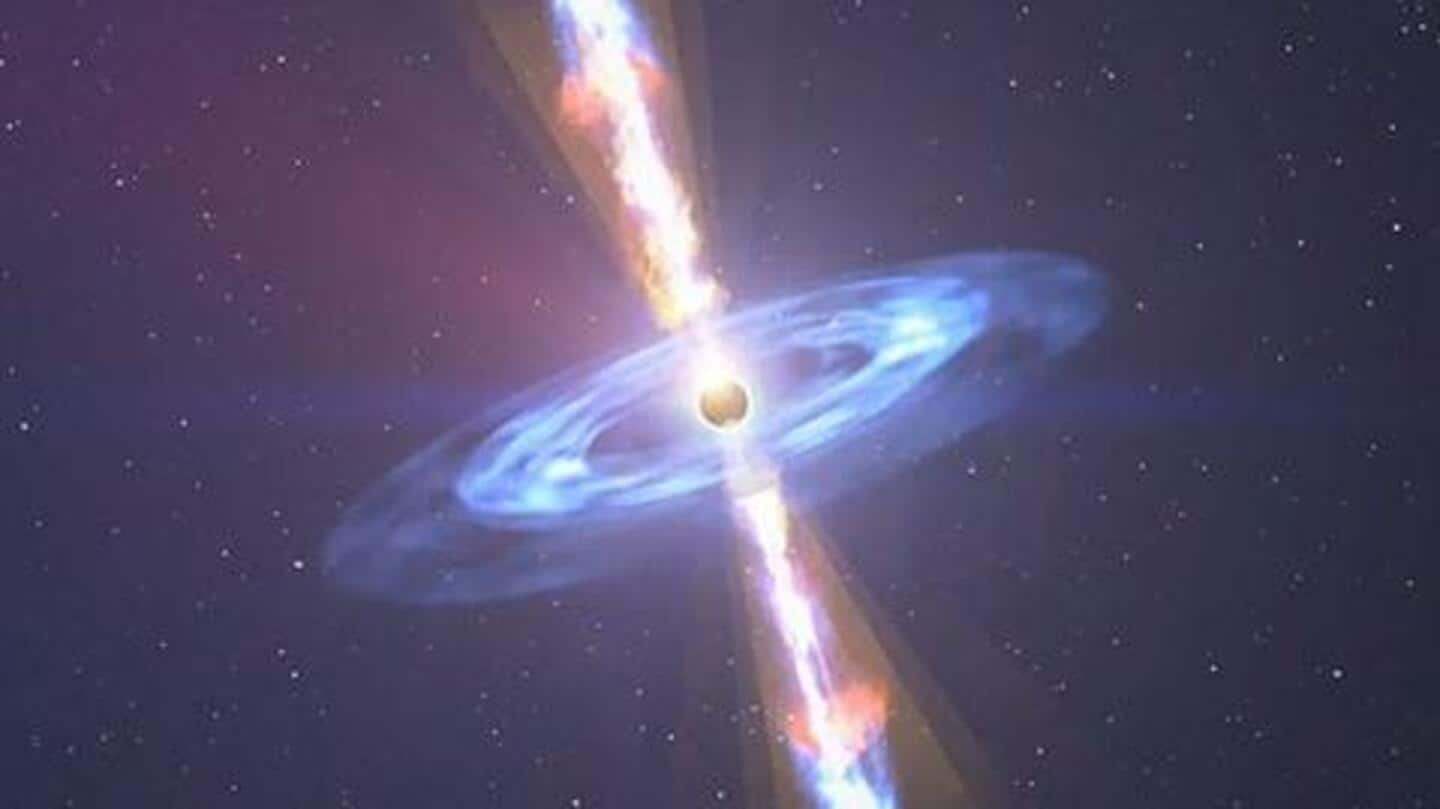
Supermassive black hole violently disrupts star; releases extraordinarily luminous jet
What's the story
A powerful but puzzling flash of light was detected from space earlier this year. It was bright enough to be visible from billions of light-years away. Astronomers from around the world, including India, have now revealed that this was due to the destruction of a star by a supermassive black hole, a phenomenon called Tidal Disruption Event (TDE).
Context
Why does this story matter?
This TDE, named AT2022cmc, is the brightest and one of the farthest. It is brighter than 1,000 trillion suns. What's even more surprising is that it was visible from a distance that's more than halfway across the universe. AT2022cmc is also the first TDE to have been discovered by an optical telescope. Initially, it was assumed to resemble a gamma-ray burst (GRB).
Details
How do TDEs occur?
TDEs occur when a supermassive black hole at the center of a galaxy violently disrupts a star that comes close to it and as a result, releases pockets of electromagnetic energy. This is seen as a powerful jet of light. When this jet aligns with the line of sight from Earth, the overall brightness is boosted by several orders of magnitude.
Discovery
More than 20 observatories came together to probe the event
Initially, the TDE AT2022cmc was observed in February by the California-based Zwicky Transient Facility. It appeared to be rapidly brightening and diminishing. Subsequently, more than 20 ground-based and space-based telescopes followed up the investigation. Among the observatories were India's Giant Metrewave Radio Telescope (GMRT) and Astrosat observatory, the Hubble Space Telescope, and the Very Large Array (VLA) radio telescope in Mexico.
Official words
'Event was 100 times more powerful than most-powerful gamma-ray bursts'
"Things looked pretty normal the first three days. Then we looked at it with an X-ray telescope, and what we found was, the source was too bright," said Dheeraj Pasham from MIT. "Typically, such bright flashes in the sky are gamma-ray bursts... This particular event was 100 times more powerful than the most powerful gamma-ray burst afterglow."
Previous incidents
TDEs are rare cosmic events
TDEs are rare events and occur only once in every 10,000 to 100,000 years in a galaxy like our own Milky Way. So far, the best-studied TDE is Swift J1644+57, which was a gamma-ray burst event discovered in March 2011. But unlike AT2022cm, Swift J1644+57 could not be seen at optical wavelengths since it was obscured by dust.
Official words
There is at least one supermassive black hole per galaxy
"We know there is one supermassive black hole per galaxy, and they formed very quickly in the universe's first million years," said Matteo Lucchini, from MIT. "That tells us they feed very fast, though we don't know how that feeding process works. So sources like a TDE can actually be a really good probe for how that process happens."